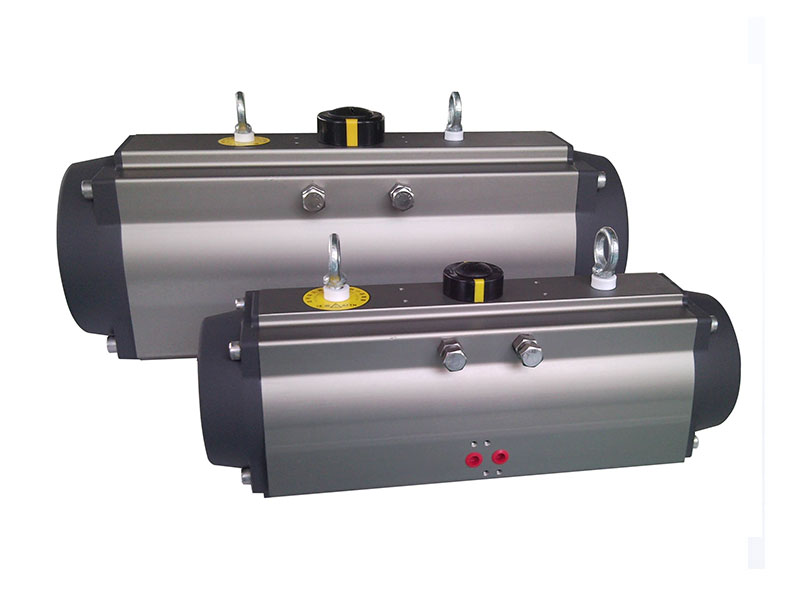Overview of pneumatic actuators
Pneumatic actuators are actuators that use air pressure to drive opening and closing valves or regulating valves. They are also called pneumatic actuators or pneumatic devices, but they are often called pneumatic heads. The actuator and adjustment mechanism of the pneumatic actuator are a unified whole, and the actuator has a diaphragm type, a piston type, a fork type and a rack type.
The piston type has a long stroke and is suitable for occasions with higher thrust requirements; while the membrane type has a small stroke and can only directly drive the valve stem. Fork-type pneumatic actuators have the characteristics of large torque and small space. The torque curve is more in line with the torque curve of the valve, but it is not very beautiful; it is often used on large torque valves. The rack and pinion pneumatic actuator has the advantages of simple structure, stable and reliable action, safety and explosion-proof. It is widely used in power plants, chemical industry, oil refining and other production processes with high safety requirements.
The working principle of pneumatic actuator
1. Working principle diagram of double-acting pneumatic actuator
When the air source pressure enters the cavity between the two piston cylinders from the air port (2), the two pistons separate and move towards the two ends of the cylinder, in the air, the two ends of the air chamber pass through the air discharge port (4), and the two pistons The frame synchronously drives the output shaft (gear) to rotate counterclockwise. Conversely, when the air source pressure enters the air chambers at both ends of the cylinder from the air port (4), the two pistons move toward the middle of the cylinder. The air in the intermediate air chamber is discharged through the air port (2), and the two piston frames simultaneously drive the output shaft (gear). clockwise rotation. (If the piston is installed in the reverse direction, the output shaft will become reverse rotation)
2. Working principle diagram of single-acting pneumatic actuator
When the air source pressure enters the cavity between the two piston cylinders from the air port (2), the two pistons separate and move toward the cylinder, forcing the two ends of the spring to compress, and the air at both ends of the air chamber passes through the air discharge port (4) to synchronize the two A piston carrier drives the output shaft (gear) to rotate counterclockwise. After the solenoid valve air pressure is reversed, the pistons of the two cylinders in the middle move in the elastic force of the spring, and the discharge port (2) in the air in the air cavity in the middle drives the output shaft (gear) smoothly with the two piston carriers. Rotate in the clockwise direction. (If the piston is installed in the opposite direction, the output shaft will rotate in the reverse direction when the spring is reset).


 customer service1
customer service1  customer service2
customer service2 